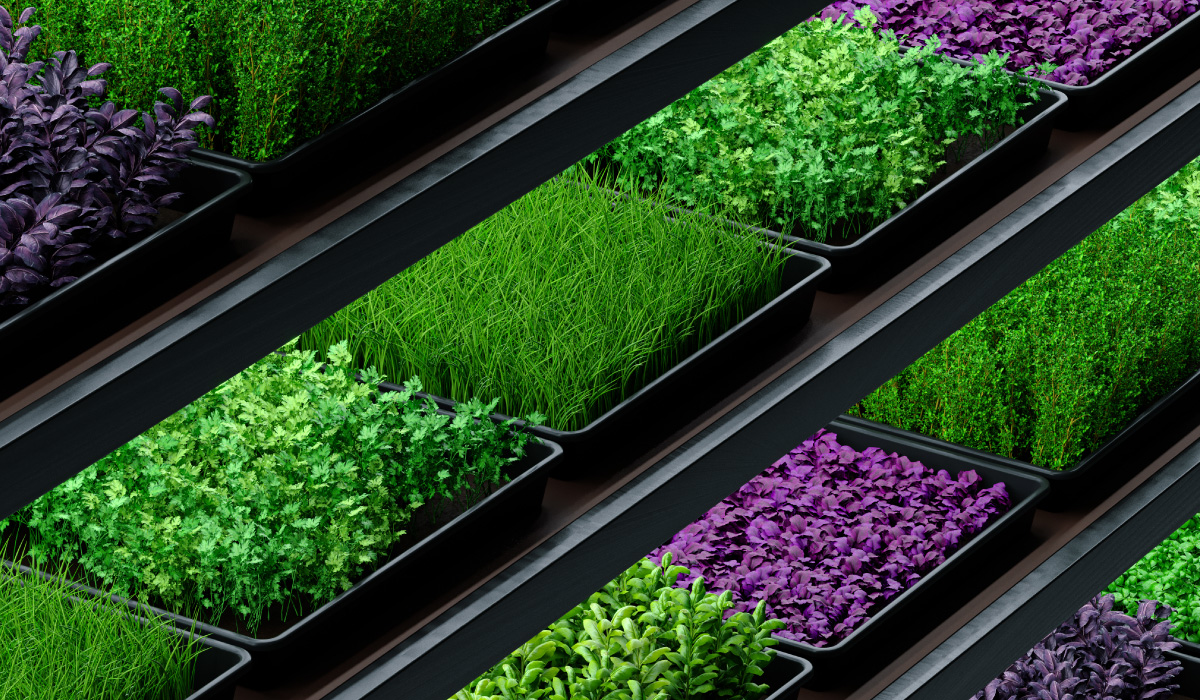Can you imagine traveling back in time to the Hanging Gardens of Babylon, one of the seven wonders of the ancient world (although its real existence is doubted) which we could consider as the precursor of modern vertical agriculture. At this construction, fruit trees such as dates and coconut palms were grown, as well as other decorative plants. According to literature, this garden, also a vertical vegetable garden, stood out for the optimization of urban space and the efficient use of natural resources, since irrigation water was extracted directly from the Euphrates River.
Asia leads in vertical farming
Almost 3.000 years later, we arrive back in the present and land in Asia, with China, Japan and South Korea leading the way in the implementation of vertical crops, representing 60% of the global! In addition, it is on this same continent, specifically in Dubai, that the world’s largest vertical farming farm exists, with 30.600m2 and three stories high. It has been designed to grow more than 1.000 tons of vegetables per year to satisfy the high demand for fresh food consumption. Bustanica (garden in Arabic) defies climate adversities, such as high temperatures, lack of rain or arid lands with an efficient production system that always keeps fresh vegetables at 23ºC. By cultivating in an urban environment close to people, it has also managed to reduce transport-related polluting emissions (so far, 80% of its fresh products was imported). Just like Urbanfresh, water is reused in closed irrigation circuits with the right and necessary nutrients for production. No herbicides, insecticides or pesticides, and no impact on the environment!
What about the rest of the world?
In Europe, there are also vertical farms, especially in Germany, the Netherlands or Denmark, countries that sometimes have unfavorable climatic conditions, such as sudden temperature changes, infrequent or torrential rains, which do not guarantee traditional fresh food production. Interestingly, Europe’s first commercial vertical farm was created in 2017 in Dronten, near Amsterdam. Lettuce was the remarkable product: grown in a 900 m2 with several levels of height, it tripled production.
Crossing the Atlantic there is also a commitment to this very sustainable method. In New Jersey, there is one of the largest vertical farms in the world (although nothing compared to Dubai). It has a vertical space of 6.000 m2 and produces about 900 tons of vegetables per year.
Nevertheless, how many people can be fed with this production model? To give you an idea, in Spain, the annual consumption per person is 60 kilos of vegetables, which would allow feeding around 17.000 people daily and exclusively (data based on Bustanica’s production in Dubai).
There are thousands of vertical crops worldwide, everyone with a common goal like Urbanfresh: to provide fresh, sustainable, and quality products to consumers.
Would you like to know more about our project? Follow us on Instagram and leave us a comment!



